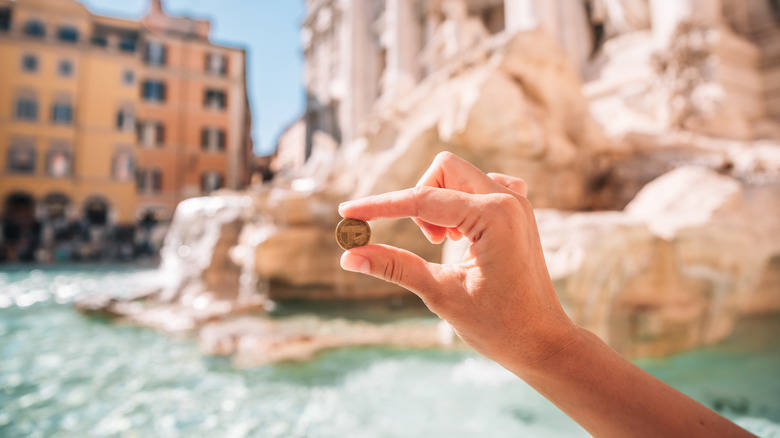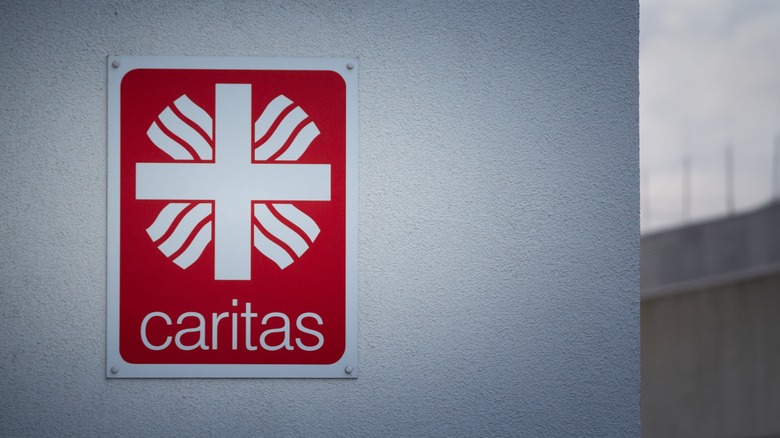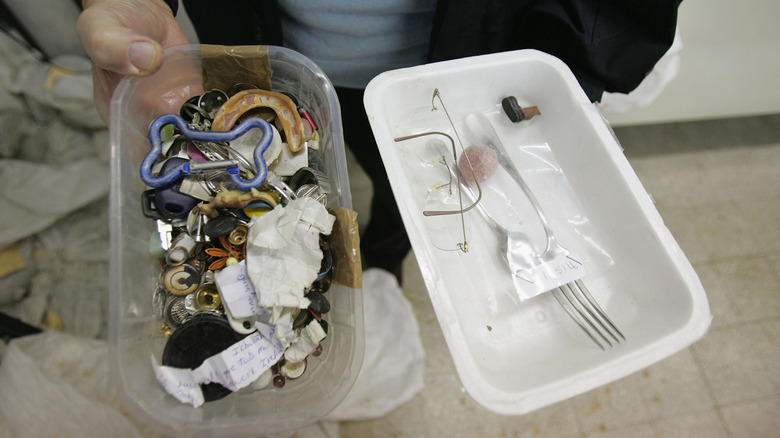Here's What Happens To All The Coins Tossed Into Italy's Iconic Trevi Fountain
With its ancient ruins, five-star Italian local food tours, and timeless allure, Rome has long been a bucket list destination for travelers worldwide. Because whether or not you're looking to explore the Italian capital's most underrated historical sites or indulge in culinary delights — or both, because why not? — the truth is that the Eternal City has a little something for everyone.
And in between its many iconic landmarks and underrated attractions you should add to your itinerary, the city's Trevi Fountain stands out as a can't-miss stop during your visit. The backdrop to countless Instagram shots and a Fellini cinematic masterpiece, Rome's Trevi Fountain isn't just a symbol of Baroque artistry and mythological storytelling — it's also a treasure trove of wishes (and the shiny coins that represent them).
However, in between the long lines and selfie-snapping tourists, there's one mystery that not many wish-makers know about before tossing their spare change into the water: Where does it all go? The answer will, hopefully, please you: A local organization collects these coins to support their work.
Your change goes to support local charities
Coins from the Trevi Fountain are collected twice a week before being taken to Caritas, a Catholic charity currently operating in 200 countries worldwide. From there, Caritas then dries, sorts, counts, and uses the funds to support local initiatives. This includes everything from soup kitchens to a city-wide supermarket (Solidarity Emporiums) where people who are struggling can get their goods for free, and various other community welfare projects.
In 2023, Caritas received a whopping $1.7 million from the Trevi Fountain — a record-breaking sum for the charity since its inception in 1971. Meanwhile, in 2022, the charity collected roughly $1.5 million — an equally impressive sum that highlights just how popular the fountain can be as a wishing well for the more than 30 million visitors who stop by each year.
All of which goes to say, if you've ever flipped a coin over your shoulder into those famous waters — congrats! Your wish — whether it came true or not (and hopefully it's the former) — did a lot more than just make a splash. Don't have euro coins handy? Not a problem. Per Giustino Trincia, director of Caritas Rome, coins in foreign currencies are separated from the rest and are then exchanged for euros (via Il Messaggero).
Dealing with thieves, lost items, and strange finds
While most of the Trevi Fountain's coins go to charity, there are cases where thieves have gotten their hands on the money first. One of the most famous coin poachers was Roberto Cercelletta — better known as D'Artagnan thanks to the magnetic sword-like contraption he would use to pick the coins. For more than three decades, the Roman-born coin thief would make his way to the fountain just after dawn in order to fish out the handfuls of change thrown in by tourists. After getting arrested and banned from the square, Cercelletta staged a protest in 2011 arguing that fishing out the coins was his only form of "employment," and that he was being denied that right. Two years later, he passed away in his home.
Sticky fingers and legal battles aside, the Trevi Fountain's treasures continue to accumulate — and, interestingly, it's not just coins that find their way into the water. From rings and bracelets — the most common items to come loose as someone throws in their coin — to religious medals, dentures, and even umbilical cords (yes, really), the fountain collects a lot more than just spare change. Don't worry, though — these aren't just thrown out. Where possible, items are recycled and then given to charity as well.


